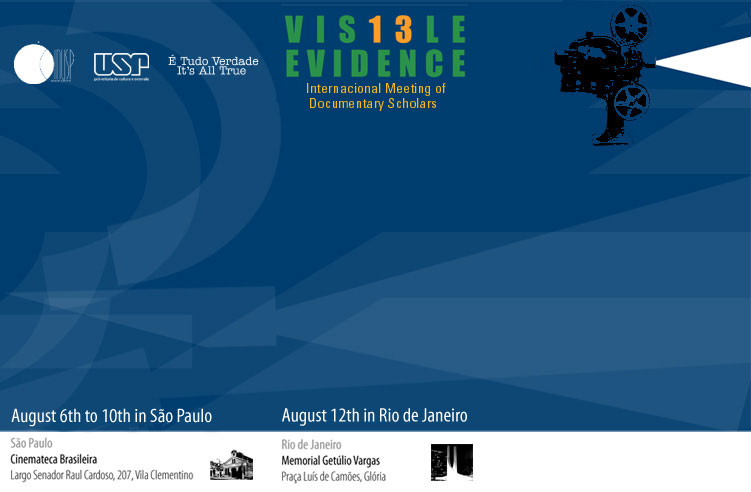
August 8th 2006, Tuesday 9am - 10:55am 7. Refiguring History and Memory through Database Documentary Chair: Marsha Kinder (University of Southern California, USA) Matt Soar (Concordia University, Canada)
Catherine L. Benamou (University of Michigan, USA)
Hart Cohen (University of Western Sydney, Australia)
Brian Goldfarb (University of California, USA)
11am - 12:55pm 8. The Historiographic Presence Machine Chair: Jane M. Gaines (Duke University, USA) Jane M. Gaines (Duke University, USA)
Bjorn Sorenssen (University of Trondheim NTNU, Norway)
Marina Moguillansky (University of Buenos Aires, Argentina)
2:30pm - 4:25pm 9. Performing History, Performing Memory Chair: Alice Lovejoy (Yale University, USA) Mariana Baltar (Universidade Federal Fluminense, Brazil)
Susan Scheibler (Loyola Marymount University, USA)
Vinicius Navarro (Universidade Metodista de São Paulo, Brazil)
Alice Lovejoy (Yale University, USA)
2:30pm - 4:25pm 10. The Fragile Image: documentary fragment, precariousness Chair: Andrea Molfetta (Universidade de São Paulo, Brazil) Andrés Di Tella (Realizador, Argentina)
Andrea França (Pontifícia Universidade Católica do Rio de Janeiro, Brazil)
Consuelo Lins (Universidade Federal do Rio de Janeiro, Brazil)
Andrea Molfetta (Universidade de São Paulo, Brazil)
4:30pm - 6:25pm 11. Multiple, ordinary, comum: identity as a singularity Chair: César Guimarães (Universidade Federal de Minas Gerais, Brazil) César Guimarães (Universidade Federal de Minas Gerais, Brazil)
Carlos de Brito e Mello (Universidade Federal de Minas Gerais, Brazil)
Ilana Feldman (Universidade Federal Fluminense, Brazil)
Pedro Lapera (Universidade Federal Fluminense, Brazil)
4:30pm - 6:25pm 12. Bodies of Extremity: The Interventionist Potential of Non-Fiction Representations of Political Struggle and Crisis Chair: Noah Shenker (University of Southern California USA) Elizabeth Cowie (University of Kent of Canterbury, England)
Noah Shenker (University of Southern California, USA)
Cristian Borges (Université Paris III - Sorbonne Nouvelle, France)
7:30pm
La Guerrilla y la Esperanza: Lucio Cabanas Lucio Cabanas, rural leader killed by the Mexican army in 1974, was head of one of the most important guerilla movements in Mexico during the 1960s and 70s. His legacy and the memory of the countryman’s struggle in Guerrero’s mountain, that left some many dead and missing behind, are still alive and represent a libertarian symbol of commitment with the poor. The testimonials of former guerilla and army companion, sympathizers, family members and survivors, historiographers, sociologists, reconstruct not only Cabana’s story but also contribute for a reflection of the causes and recurrences of the army movements in social struggle that has characterized Mexico in the last century. |
